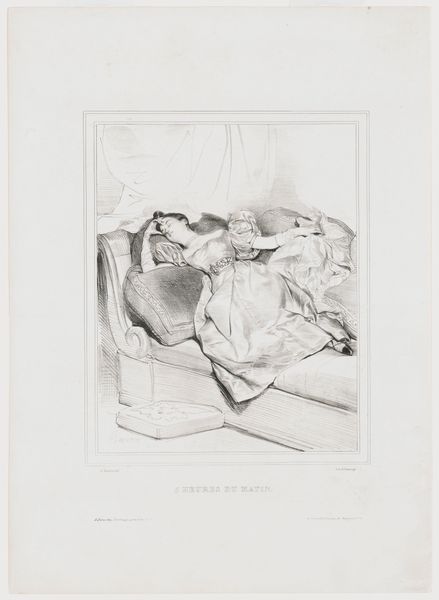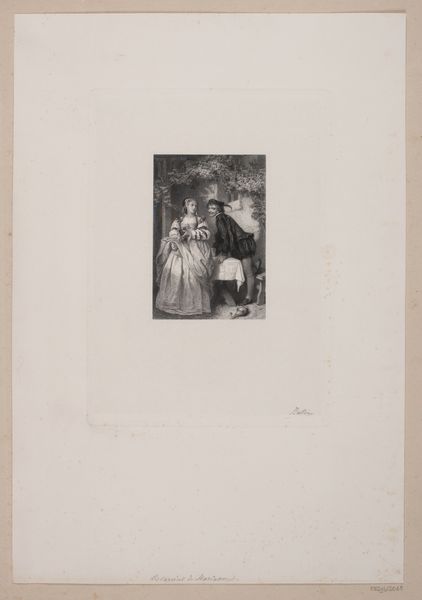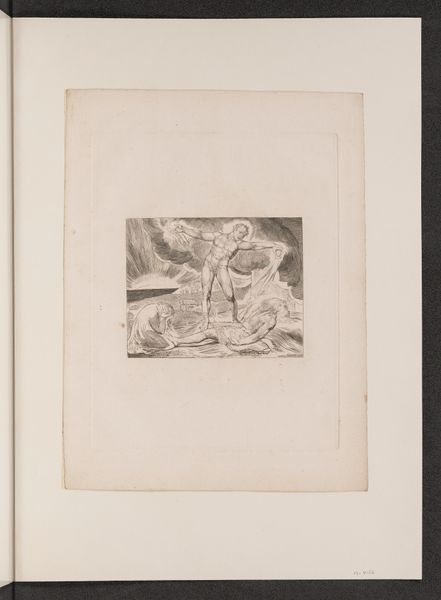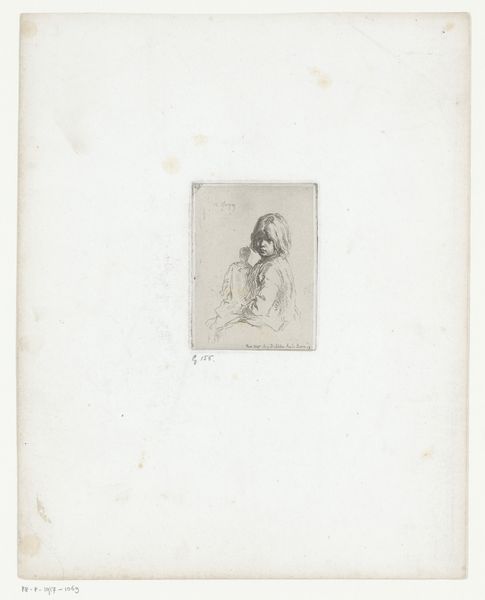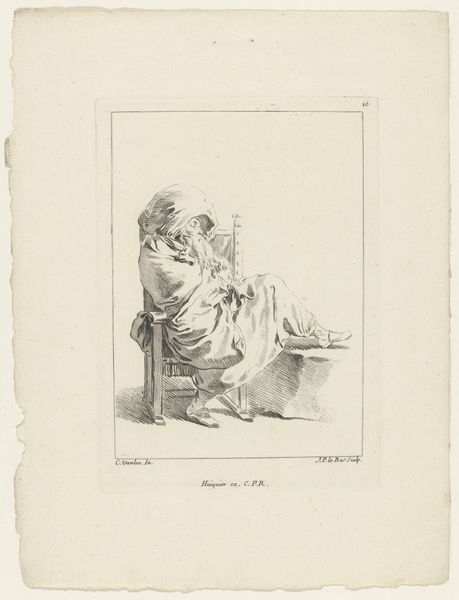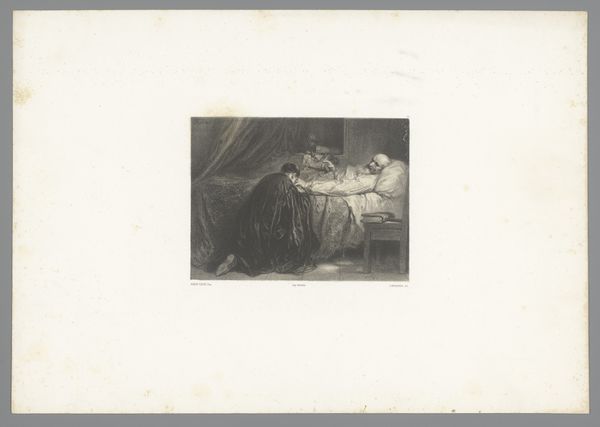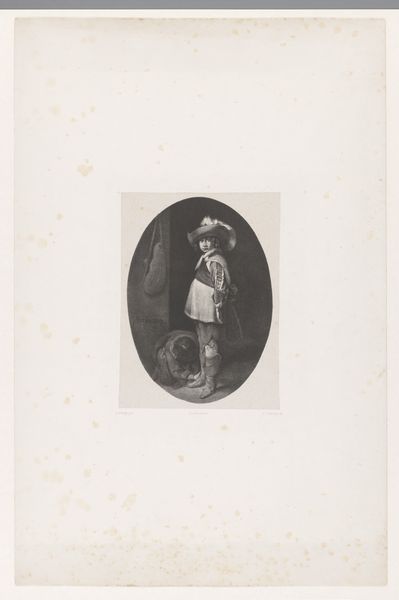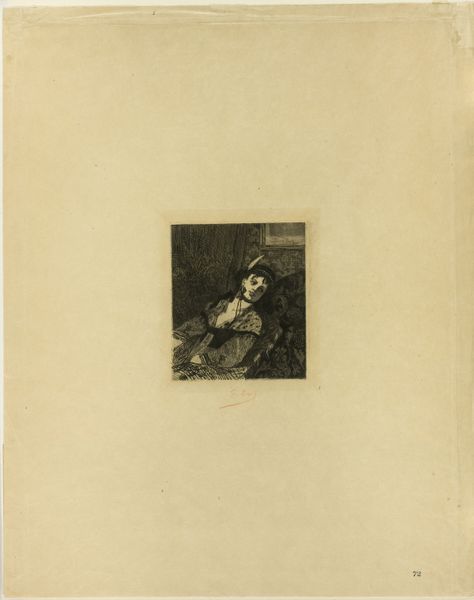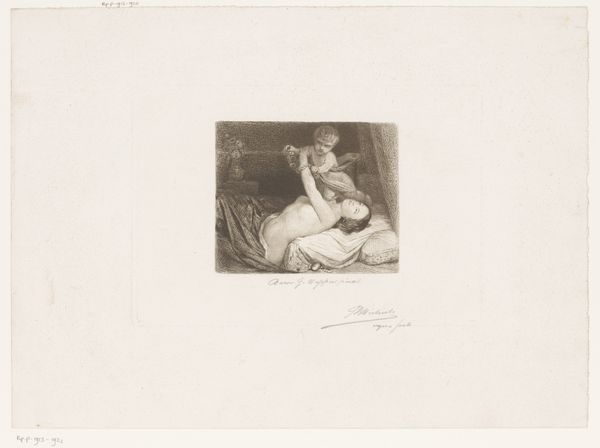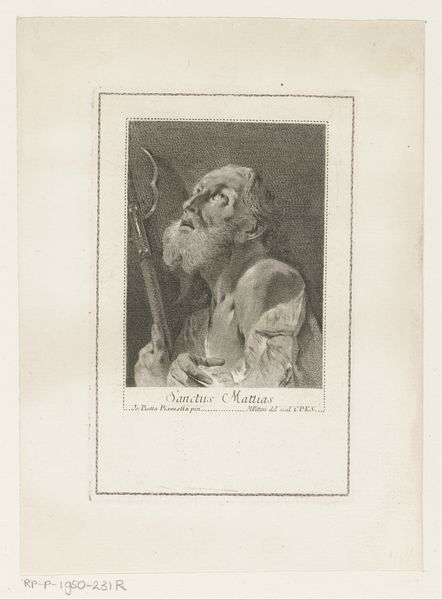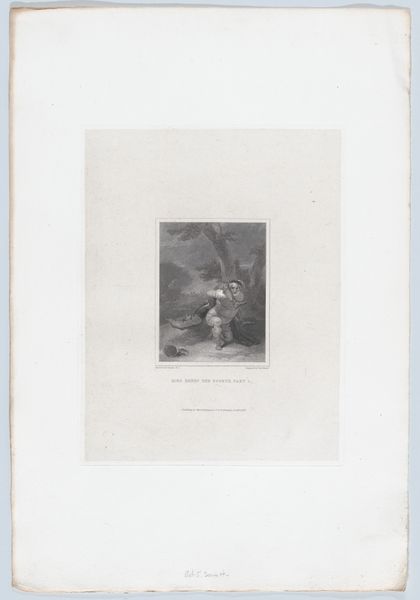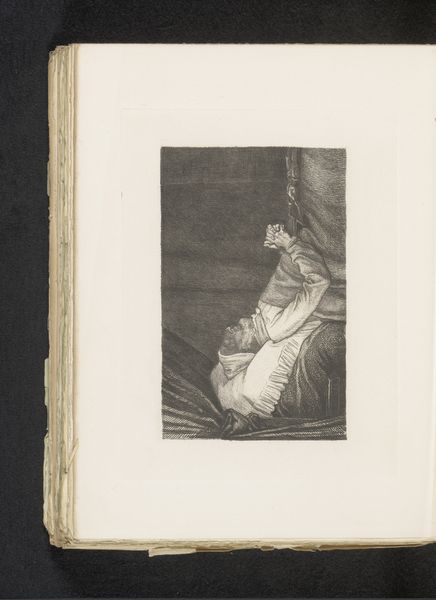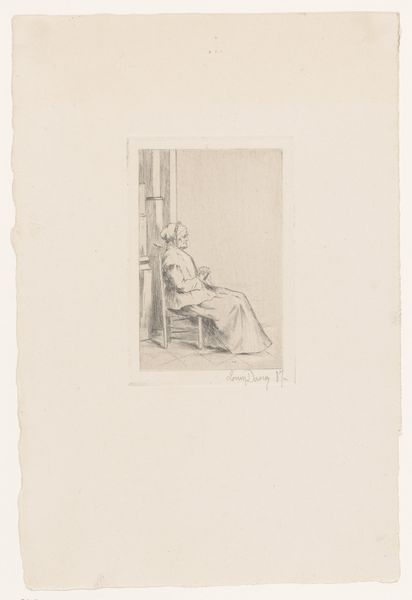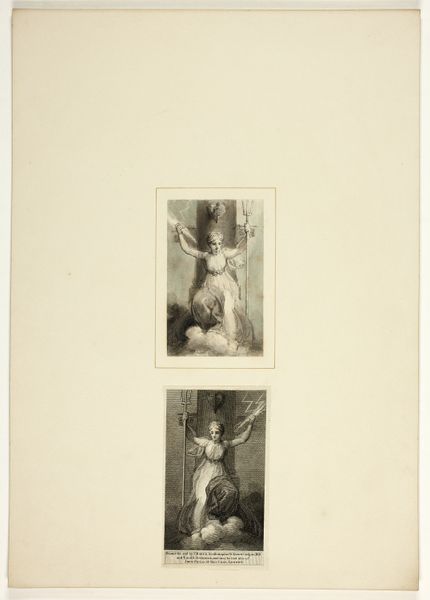
Dimensions: Plate: 6 5/8 × 4 1/2 in. (16.8 × 11.4 cm) Sheet: 9 13/16 × 6 13/16 in. (25 × 17.3 cm)
Copyright: Public Domain
Editor: This is "Le Bonjour," a print made between 1856 and 1896 by Charles-Edouard Delort, using etching and engraving with ink on paper. There’s a kind of dreamy quality to the scene, this woman leaning out of what looks like a casement window... it feels very intimate. What do you see in this piece? Curator: I'm immediately drawn to the window itself, and what it represents. Windows are transitional spaces, boundaries between inside and outside. She leans out, performing, perhaps, a morning greeting – hence the title. What fascinates me is how the image plays with desire and expectation. Editor: Desire and expectation? Can you elaborate? Curator: Consider the gesture – the lean, the slight smile. It's charged with possibility, isn’t it? Is she waiting for a lover, a friend, or perhaps just greeting the day? It invites us to project our own narratives onto her, our own longings. And observe how Delort captures this ephemeral moment using techniques that fix it in time. Think about the symbolic weight of this exchange, both as a daily routine and as a performance for a viewer. What does a ‘greeting’ signify culturally? Editor: That's a great point about performance! I hadn’t considered the greeting as a conscious act of presentation. Curator: Exactly. Also, the clothing and the setting are visual cues—romantic, picturesque—speaking to an established artistic vocabulary, one where images of women at windows are freighted with expectation. Editor: This makes me think about how much images are embedded in traditions and symbolism. It's never just a woman at a window, is it? Thanks for opening my eyes! Curator: And thank you for bringing fresh eyes to an old image! This reminds me that even seemingly simple greetings can be rich with meaning, visually and psychologically.
Comments
No comments
Be the first to comment and join the conversation on the ultimate creative platform.
